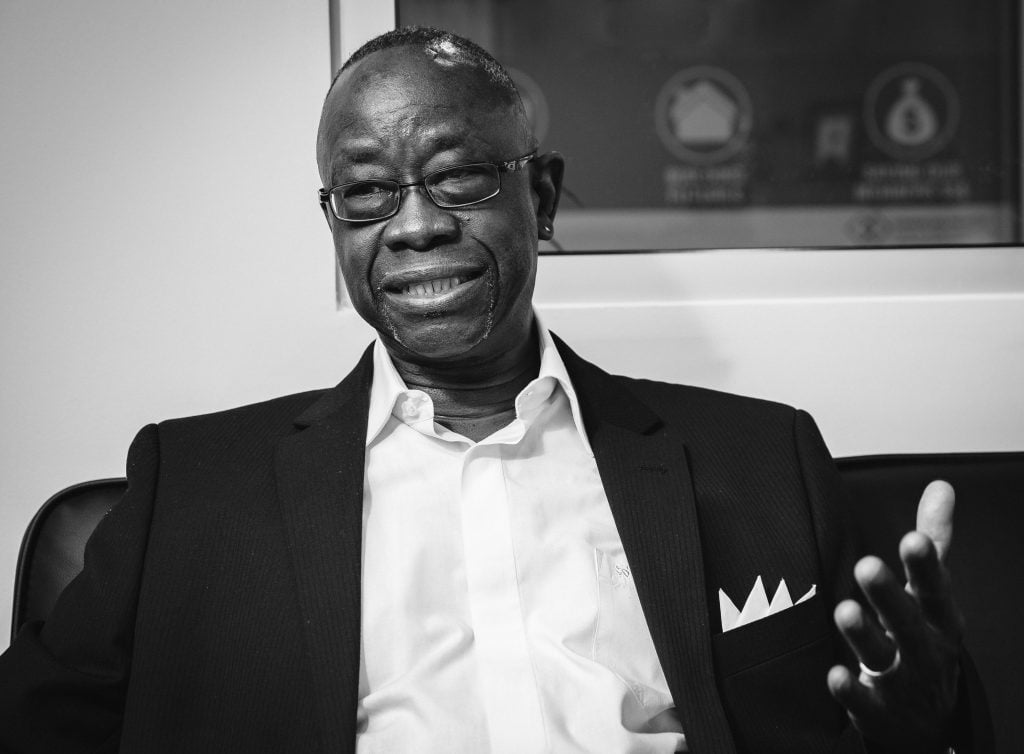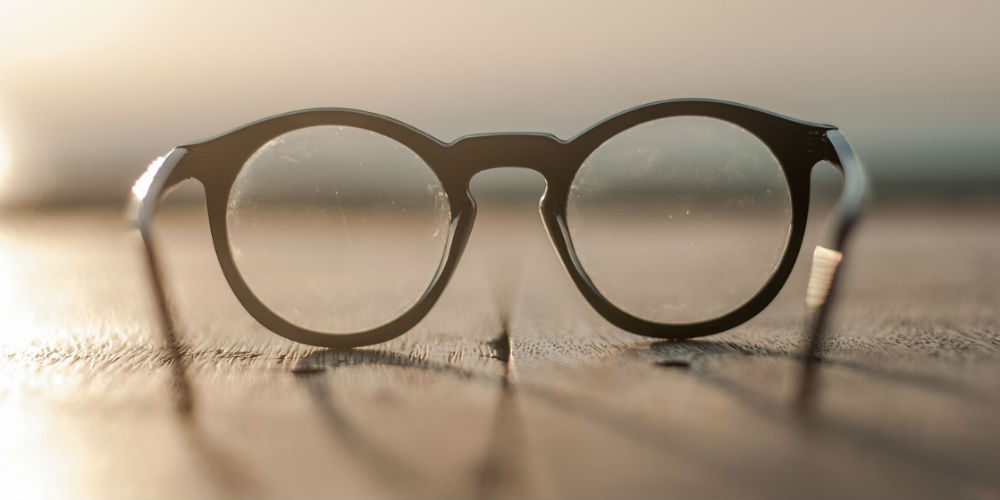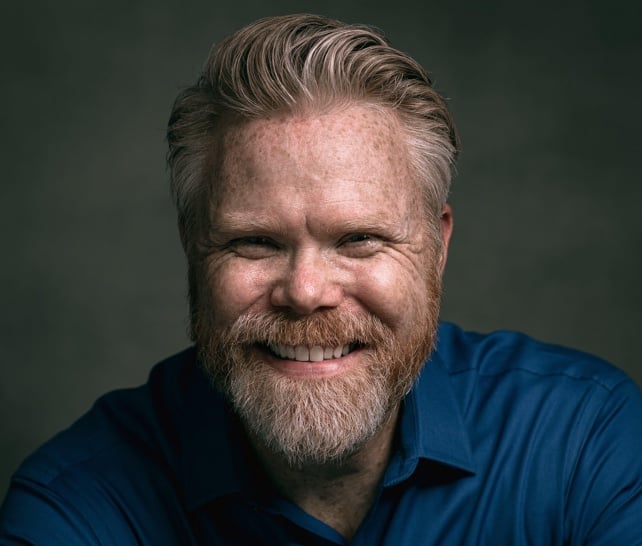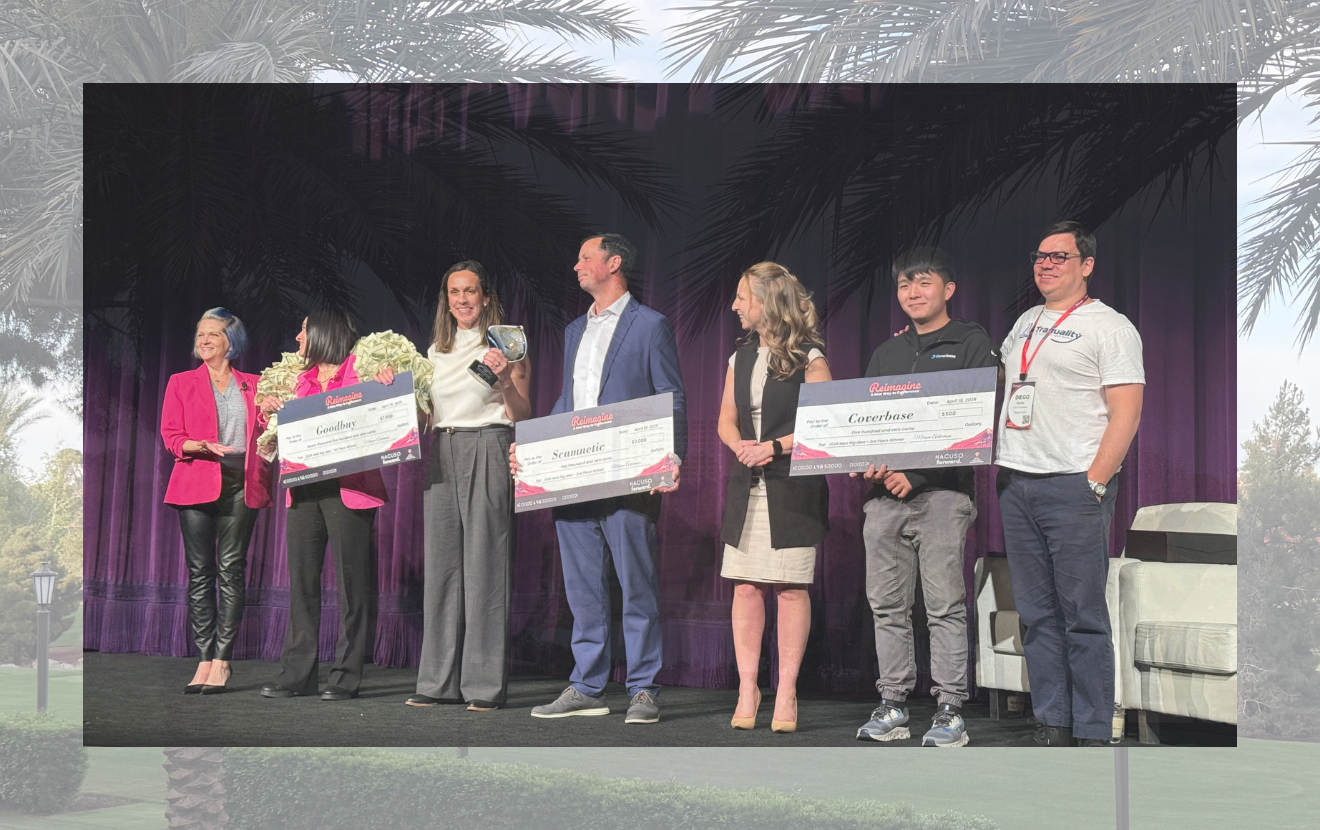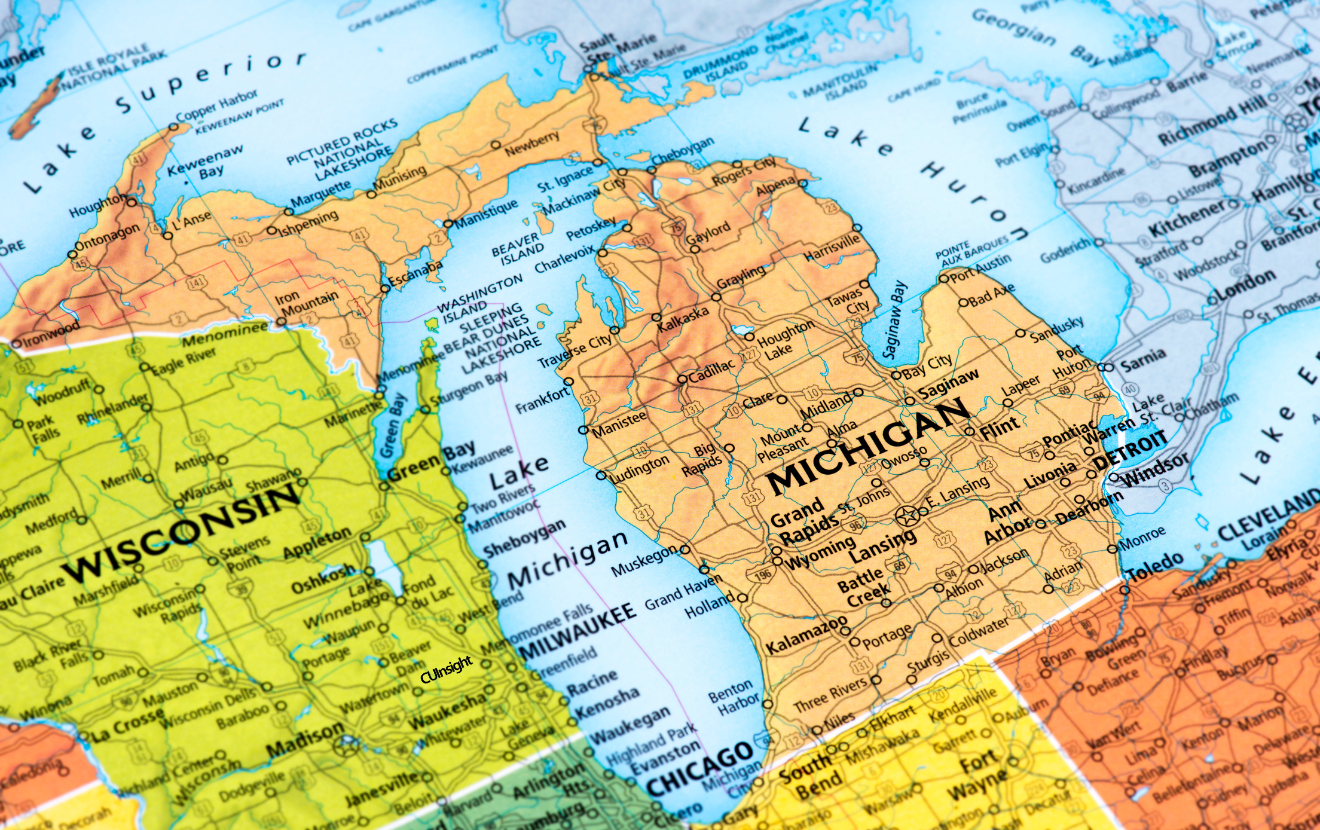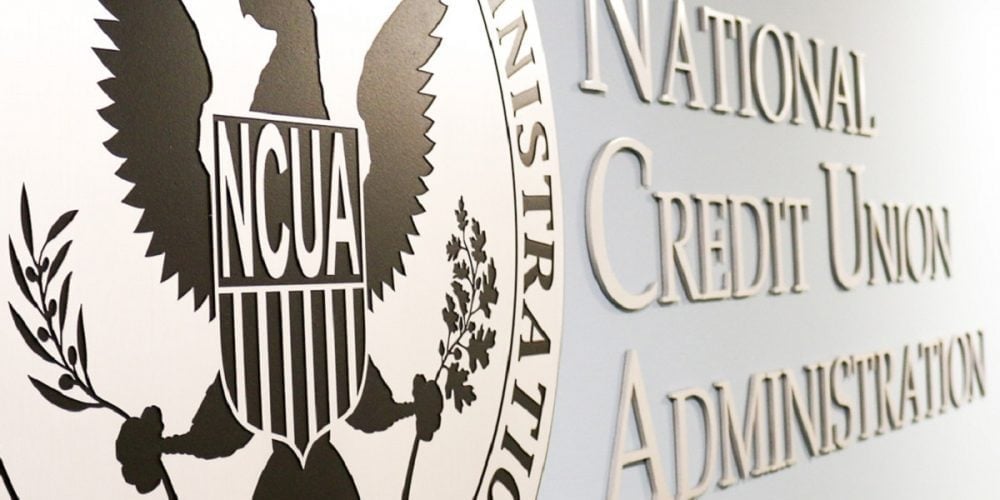(Author’s note: This story will take you 7 minutes to read. It has 1,220 words, 4 pictures, and 1 observation you may find offensive. Enjoy.)
Before we go any further, I need you to look at this man’s face. Really see him. That smile? Joy incarnate. If your own smile hasn’t widened by now, or at least flickered to life just a little, you’re going to hate everything else that comes next.
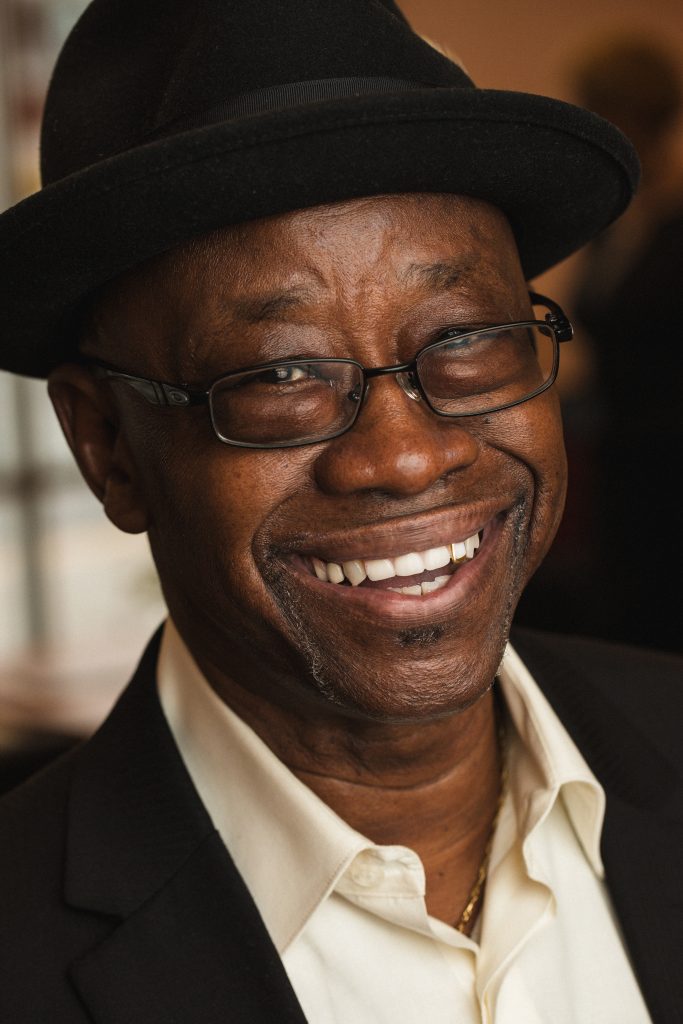
This is Allie, and he is a credit union member.
He belongs to one of the smallest credit unions in Indiana. I can’t reveal their name yet, but it’s safe to say that most of you have never heard of them.
But Allie has. And that’s why I get the privilege of working with him today.
I’m here because I’ve partnered with Amanda Elkins and Tara Kochansky of TwoScore to create a series of photos for the credit union’s annual campaign that celebrate the real members at the heart and soul of their organization.
Allie and I are meeting in a branch that shouldn’t exist, at least not by the standards of the 87 banks and the other 154 credit unions that service the state.
That’s because all of them decided, on their own and for their own reasons, that the 29,000 low-income folks living in the 9 square miles surrounding Allie’s infectious grin weren't worth their investment.
Not Allie’s credit union, though. They established the only branch in this ZIP code. And it thrives.
Allie strolls around the lobby in his best suit, hat, and pocket square, humble and hilarious, telling stories and cracking jokes with Monique and Diana behind the line and Felicia at the new accounts desk.
He’s patiently waiting for me to finish setting my lights and adjusting my cameras, a process he’s unintentionally made more difficult because I keep stopping to listen to him rather than wrap up my prep work.
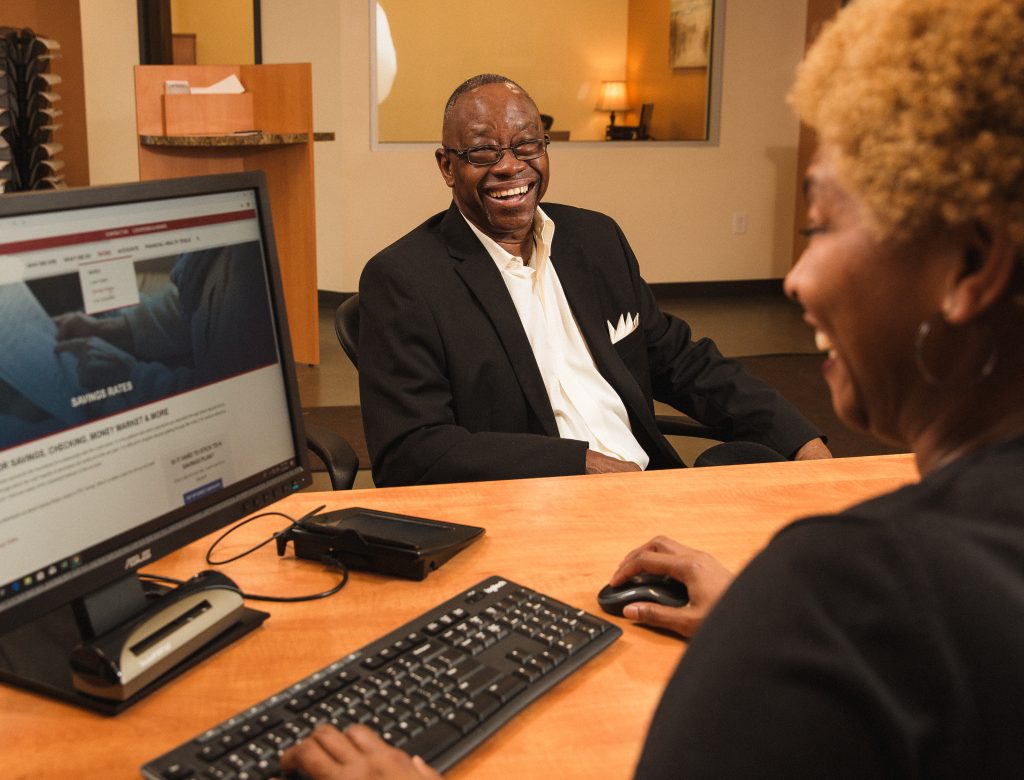
Finally done, I cross the lobby to greet him. His smile explodes to life again as his right hand clasps mine in a handshake made all the warmer by the covering of his left.
In the next few minutes, Allie changes from stranger to friend. He loves travel, his wife, and traveling with his wife. We talk photography, the pictures he’s taken, and the ones still waiting for him.
He cherishes his credit union, how they’ve helped bad times go good and stay there, how much he enjoys visiting this improbable branch a short bus ride from his house.
“They treat me like family, man,” he gushes. “Maybe it’s because I remind them of their crazy uncle,” — I laugh so hard that I need to put my camera down for a moment — “but it’s true, man. Family, right here,” affection thick in his voice and bright in his eyes.
...
I’ve spent the last 30 years of my life serving the financial services world, with the best two-plus decades devoted to credit unions. This industry has been far better to me than I deserve. I love it more than I care to admit in casual conversation. I speak and photograph and write about the heroes and villains in, around, and beyond it as a way to honor what I’ve been given and to inspire those who will reap what we’ve sown.
That passion compelled me to take on this credit union photography project. Other reasons were in play, however.
We cover our websites and branches and marketing materials with every combination of industry-standard safe words: low fees and great rates, awesome service and convenient locations, people helping people.
We say we love, appreciate, value, care for, want to hear from, are here to serve, and are devoted to our members.
Chances are, unfortunately, your credit union website doesn't contain a single image of an actual member.
This isn’t to say you don’t have pictures on your site. You have an impressive array of carefully chosen stock photos, filled with every manner of pretty model faces in various states of work, play, relaxation, conversation, contemplation, and calculation, many of whom are happier than any other human being in recorded history to pull out a debit card, drive a car, sign a document, walk down a street, interact with another pretty model face, or use anything with a screen.
This observation may offend you. You have your own reasons, thank you very much, for relying on iStockPhoto or ShutterStock or Getty Images or Adobe Stock to cobble together a beautiful collection of pictures to serve as perfect avatars of your ideal membership. Questioning why we spend a member’s money on member-less images is pretty cheeky of me. I get it.
You may also think our industry’s reliance on stock photography isn’t a big deal. Before you post your rebuttal to these or other related points, please consider (with more data here):
- Eye-tracking studies of websites show that photos of real people are often treated as important visual content and are scrutinized far more than stock photos and obvious filler content, which are typically ignored.
- When researchers tested a real photo of a client against their top-performing stock photo, they found that nearly 35% of visitors would be more likely to sign up when they saw the real deal.
- A moving company added roughly $10,000 per month to their business when they tested real photographs against “cheesy stock people with boxes."
If our industry plans to invest $100 million into opening eyes to credit unions, then we better have something unique, personal, and real for their eyes to actually see…and we’d better be willing to see them, too.
Because if we continue to reduce our members - the people we claim to love, the people we claim to honor as owners, the people we claim to serve - to cheap, generic, and disposable abstractions in the credit union’s narrative, members will do the same to us. And we’ll have no one to blame but ourselves.
We can do better. As member-focused as we say we are, we must do better. We owe that to our members.
Members like Allie.
...
With Allie's portrait safely in my camera, I tell him we’re all finished. We shake hands goodbye, left over right again, warm as ever, my smile matching his.
I walk him to the branch’s entrance and pose one last question: why did he dress up so much? I certainly appreciated his extra effort, especially because he had already worked one job that morning and had sacrificed a few hours of sleep to be here with me in the afternoon before clocking in at his second job at 1am. He could’ve showed up in a t-shirt and jeans, though. His smile and story had already won the day.
He stops by the door and says, “It’s a respect thing, you know? This place has done right by me. I wanna do right by them.” Then, with a final glance around the branch, “Family, my man. Family.”
He turns to leave, only to pause and look back at me. He pats my arm. “Thank you for this. Thank you for today. This made me feel real special, man. I’ll never forget you.”
Neither will I, Allie.
Neither should we.
